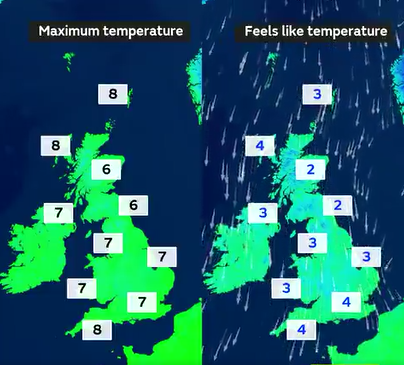Wind chill factor
Wind chill factor takes into account wind speeds and humidity to assess how the human body actually feels temperature.
Wind chill
The 'feels like' temperature is different to the actual air temperature shown on a weather forecast. The 'feels like' temperature measures the expected air temperature, relative humidity and the strength of the wind at 5 feet (human height) as well as an understanding of how heat is lost from the human body during cold and windy days.
In our explainer video, we break down the science behind wind chill, look at how the wind speeds up heat loss and explore why "feels-like" temperatures matter.
How do we measure wind chill?
There is no official definition of wind chill and definitions vary globally, dependent on how it is measured. In the UK, a system called the Joint Action Group for Temp Indices is used to realistically measure wind chill. This calculates wind chill by measuring how much heat is lost from a person's bare face at a walking speed of 3mph.
A formula is used to measure 'feels like' temperature using the actual air temperature and adjusting this with the understanding of wind chill when the temperature is low and the heat index when temperatures are higher. When temperatures are average, a combination of both is used.
Impacts of wind chill
The 'feels like' temperature is especially important on windy days due to the effect of wind on the evaporation speed of moisture from skin, the stronger the wind, the faster the cooling of the skin. This has the effect of moving heat away from the body and making the surrounding air feel colder than it actually is.
'Feels like' temperatures throughout the year are particularly influenced by wind. An example of this is in winter when winds blowing to the UK from a north- easterly direction make the 'feels like' temperatures colder than the actual air temperature. On a calm day, our bodies insulate us with a boundary layer which warms the air closest to the skin. If it is windy, the wind will take the boundary layer away and the skin temperature will drop making us feel colder.

When the wind speed is low in periods of high temperatures, the 'feels like' temperatures become more impacted by the humidity level. When a human perspires, the water in the sweat evaporates leading to the cooling of the body as the heat is carried away. When humidity is high, this evaporation reduces resulting in 'feels like' temperatures that appear warmer than the actual air temperature.





